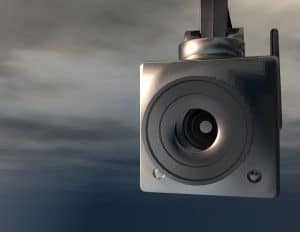Video surveillance cameras have become a mainstay for many loss prevention programs. As the technology evolves and business needs grow more complex, loss prevention leaders are looking for solutions that are both affordable and capable of meeting the escalating demands of the business.
LP Magazine sat down with Mike Dunn, vice president of business development for BSI, to garner his expertise and insights on building effective video surveillance systems and how to get the most out of existing systems to help maximize retailers’ options and investment.
What are the primary considerations when choosing between an analog versus an Internet protocol (IP) camera system?
Before deciding on a video option, it is advisable to first understand how the technologies work, as the differences in both camera technologies and method of video transmission are critical to developing a well-planned video solution.
The primary difference is in the way the video signal is delivered. Analog cameras turn video signals into a format that can be transferred over coaxial cable and received by a television or other device, such as a digital video recorder (DVR) where the image is digitized and stored. IP camera technology is much more advanced. It captures an image, immediately digitizes the video signal inside the camera and keeps the image digital throughout the entire transportation and viewing process. This process allows the IP camera to keep a higher base-level image over analog.
Some of the primary considerations include:
Image Quality—This would depend on how the system is being used. Resolution limits on analog cameras make them best suited for placement close to the area being monitored, whereas the advanced capabilities of IP cameras allow millions of additional colors at a higher resolution with crisper picture quality.
Scalability—The ability of a system to handle a growing number of cameras in a capable manner will factor in many decisions. For example, most analog systems require DVRs that manage 16 or 32 channels, which may work well with smaller systems. But what if you have 17 or 33 cameras? This would require adding additional equipment at substantial costs. IP systems provide greater flexibility, allowing you to construct the system based specifically on what you need and offering more options if you wish to expand later.
Intelligence—Today, we want our systems to do much more than capture images. Some analog and most IP systems offer options that can add intelligence to live and recorded video. However, analog systems require additional hardware to accomplish many of these functions. Conversely, an IP camera is as much a camera as a smartphone is just a telephone, providing higher intelligence capabilities that can be built into the device.
Edge Storage/Serverless Solutions—This would also depend on the size and use of the system. Analog systems require digital conversion and a method to store the video outside the camera, which requires the use of an encoder or a DVR. Smaller IP systems don’t necessarily require DVR equipment for 4-16 cameras, providing the flexibility to break free from the traditional setup of cameras and a DVR. Some IP cameras today can use their own built-in CPU and storage, recording the images directly on the camera. The customer can view HDTV recordings or live viewing from his smart phone or tablet leaving no physical “box” on site. Costs of software and additional equipment to manage the solution must then be factored in.
Total Cost of Ownership—Analog systems are typically less expensive when initially installed. However, it is important to consider the total cost of owning any loss prevention technology system. The size of the system, expansion costs, maintenance, intelligence solutions, and other advantages may provide direct ROI and substantially lower the break-even costs on IP systems, which should be factored into any design.
What if I currently have an analog system, but want the advantages of the IP system? Are there affordable video surveillance cameras that don’t require me to buy an entirely new system?
Hybrid systems (part analog and part IP) can be designed that allow you to migrate existing analog components into a modern IP-based system, providing productive and cost-effective options. For example, an IP encoder can be added that uses the current analog camera and converts its signal into an IP network device. When additional cameras need to be added, you then have choices so you can select the right camera technology based on the scene requirements. Your solution provider/integrator should be able to work with you to create and effective and affordable migration plan.
When choosing a solution provider to help with this migration plan, what should we look for?
First, you should choose a provider that is willing to work with open systems, someone who won’t simply tie all of their solutions to a particular brand rather than recommending best-in-class products and services. You should also identify providers who know or are willing to learn the culture of your company and the global needs of the business in order to design a video surveillance solution that will solve specific problems. Finally, look for providers who are willing to work with and educate your team members on the products, and the best way to use video surveillance tools to get the most out of their investment. Building the partnerships and investing in total solutions helps build trust and relationships that last.
